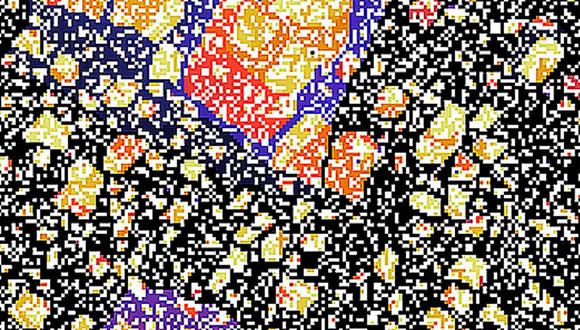סמינר לפיזיקה של מערכות ביולוגיות וחומרים רכים: Mixed active-passive suspensions: from particle entrainment to spontaneous demixing
Prof. Marco Polin, University of Warwick
Zoom: https://zoom.us/j/98216820750
Abstract:
Understanding the properties of active matter is a challenge which is currently driving a rapid growth in soft- and bio-physics. Some of the most important examples of active matter are at the microscale, and include active colloids and suspensions of microorganisms, both as a simple active fluid (single species) and as mixed suspensions of active and passive elements. In this last class of systems, recent experimental and theoretical work has started to provide a window into new phenomena including activity-induced depletion interactions, phase separation, and the possibility to extract net work from active suspensions. Here I will present our work on a paradigmatic example of mixed active-passive system, where the activity is provided by swimming microalgae. Macro- and micro-scopic experiments reveal that microorganism-colloid interactions are dominated by rare close encounters leading to large displacements through direct entrainment. Simulations and theoretical modelling show that the ensuing particle dynamics can be understood in terms of a simple jump-diffusion process, combining standard diffusion with Poisson-distributed jumps. Entrainment length can be understood within the framework of Taylor dispersion as a competition between advection by the no-slip surface of the cell body and microparticle diffusion. Building on these results, we then ask how external control of the dynamics of the active component (e.g. induced microswimmer anisotropy/inhomogeneity) can be used to alter the transport of passive cargo. As a first step in this direction, we study the behaviour of mixed active-passive systems in confinement. The resulting spatial inhomogeneity in swimmers’ distribution and orientation has a dramatic effect on the spatial distribution of passive particles, with the colloids accumulating either towards the boundaries or towards the bulk of the sample depending on the size of the container. We show that this can be used to induce the system to de-mix spontaneously.
References:
- Jeanneret, R., Pushkin, D.O., Kantsler, V. and Polin, M. Particle entrainment dominates the interaction of microalgae with micron-sized objects. Nat. Commun. 7, 12518 (2016).
- Mathijssen, A., Jeanneret, R., and Polin, M. Universal entrainment mechanism governs contact times with motile cells. PR Fluids 3, 033103 (2018).


